Among the rich biodiversity of Borneo’s rainforests, few creatures capture the imagination quite like the proboscis monkey (Nasalis larvatus). These distinctive primates, with their pot bellies and reddish-brown fur, are instantly recognizable by one extraordinary feature—their large, pendulous noses that hang prominently over their mouths. Males sport the most dramatic nasal development, with noses that can grow up to 7 inches (17.5 cm) long and hang below their mouths. This remarkable facial feature has earned them the local nickname “monyet belanda” or “Dutch monkey,” a humorous reference to the Dutch colonists with their stereotypically large noses.
Endemic to the island of Borneo, these endangered primates represent a fascinating case study in evolutionary biology. Their extraordinary nasal appendages are not merely a quirky physical trait but serve specific biological and social functions that have developed over thousands of years. Understanding the evolution of the proboscis monkey’s nose provides valuable insights into sexual selection, adaptation, and the complex interplay between physical traits and survival in specialized ecological niches.
The Basics of Nasal Anatomy

Before delving into the evolutionary significance of the proboscis monkey’s nose, it’s important to understand its basic structure. Unlike human noses, which have a relatively rigid cartilaginous framework, the proboscis monkey’s nose is highly flexible and composed primarily of soft tissue. The nose is filled with erectile tissue that can become engorged with blood, similar to the mechanism behind human erectile tissues. This allows the nose to change in size and rigidity depending on the monkey’s physiological state or environmental conditions.
The nostrils are positioned downward rather than forward, an adaptation that may help prevent water from entering the nasal passages when swimming. Internally, the nasal cavity features complex turbinate structures that increase the surface area available for air conditioning and filtering. The size disparity between males and females is striking—while adult males develop the iconic pendulous nose, females have smaller, more pointed noses that curve upward slightly at the tip, demonstrating one of the most extreme cases of sexual dimorphism in primates.
Sexual Selection: The Driver of Nasal Exaggeration

The most compelling explanation for the proboscis monkey’s extraordinary nose lies in the concept of sexual selection. First proposed by Charles Darwin, sexual selection refers to the evolution of traits that enhance an individual’s chances of mating, even when those traits might not directly contribute to survival. In the case of proboscis monkeys, research strongly suggests that females prefer males with larger noses, creating evolutionary pressure for increasingly exaggerated nasal development in the male population.
Studies have shown a correlation between nose size and harem size among male proboscis monkeys, with the most impressively endowed males typically leading larger groups of females. This preference may relate to the nose’s role as an honest signal of male quality, as maintaining such a large appendage requires good health and genetic fitness. Some researchers have also documented that the nose becomes more engorged and reddened during displays of excitement or aggression, suggesting it plays a role in male-to-male competition as well as in attracting females—a dual function that would further accelerate its evolution.
Acoustic Amplification: The Nose as a Sound Chamber
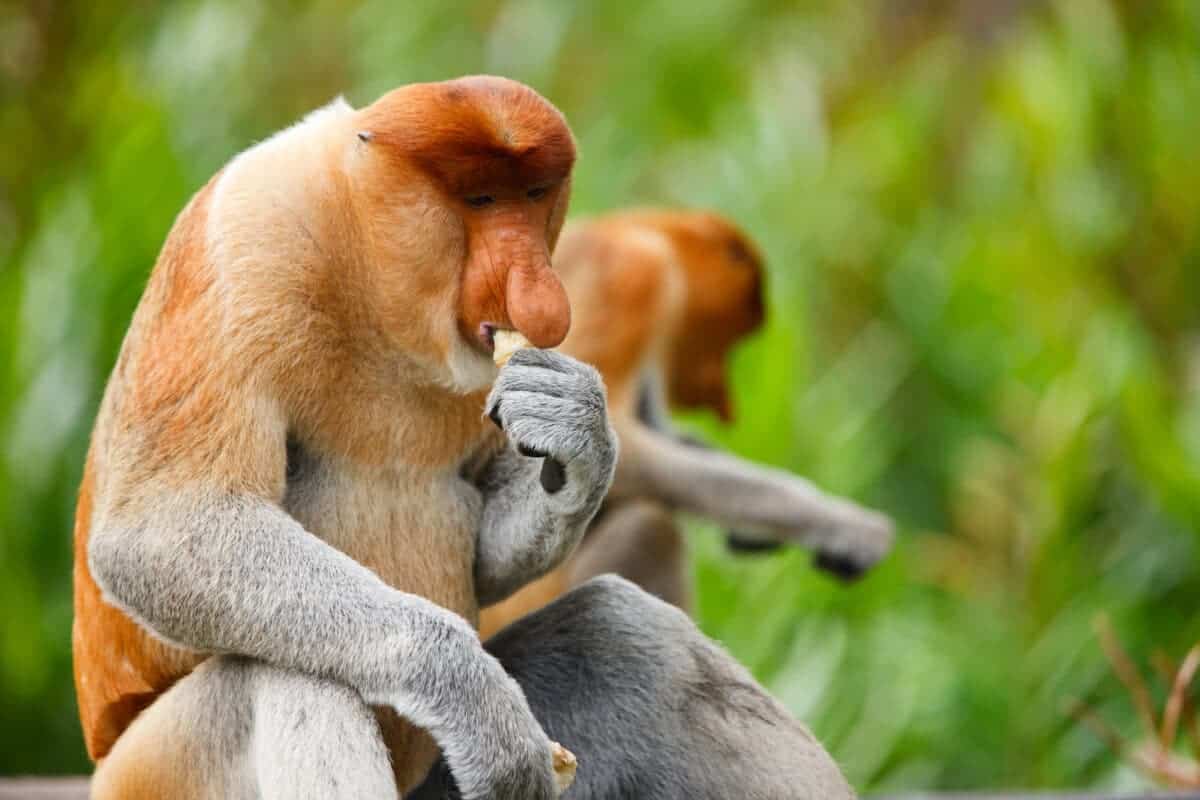
Beyond its role in sexual selection, the proboscis monkey’s nose serves another remarkable function: it acts as a resonating chamber that amplifies vocalizations. Male proboscis monkeys are known for their distinctive honking calls, which can travel considerable distances through the dense rainforest. These vocalizations are critical for maintaining group cohesion and establishing territorial boundaries in their riverine habitat. Research using acoustic analysis has revealed that the size and shape of the nose significantly affect the acoustic properties of these calls.
The nasal cavity essentially functions as a natural megaphone, deepening the pitch and increasing the volume of vocalizations. Larger noses create deeper, more resonant calls that may signal greater body size and dominance to potential rivals. This acoustic advantage provides an additional selective pressure favoring larger noses in males, complementing the sexual selection hypothesis. Interestingly, this dual function mirrors evolutionary patterns seen in other species, such as the elaborate crests of lambeosaurine dinosaurs, which likely served both display and acoustic purposes.
Thermoregulatory Functions

The vascular nature of the proboscis monkey’s nose suggests it may also play a role in thermoregulation. Similar to the large ears of elephants or the elaborate nasal turbinates in camels, the extensive surface area of the nose, richly supplied with blood vessels, could help dissipate excess heat in the hot, humid climate of Borneo. When blood flows through the nose, heat can transfer from the blood to the surrounding air, cooling the animal’s core temperature.
This thermoregulatory hypothesis is supported by observations of male proboscis monkeys in varying weather conditions. During particularly hot days, males have been observed with more reddened, potentially more highly vascularized noses, suggesting increased blood flow to the area for cooling purposes. While not likely the primary driver of the nose’s evolution, this thermoregulatory function may represent an exaptation—a trait that evolved for one purpose but later became useful for another—providing additional adaptive value to an initially sexually selected trait.
Comparative Analysis with Other Primates
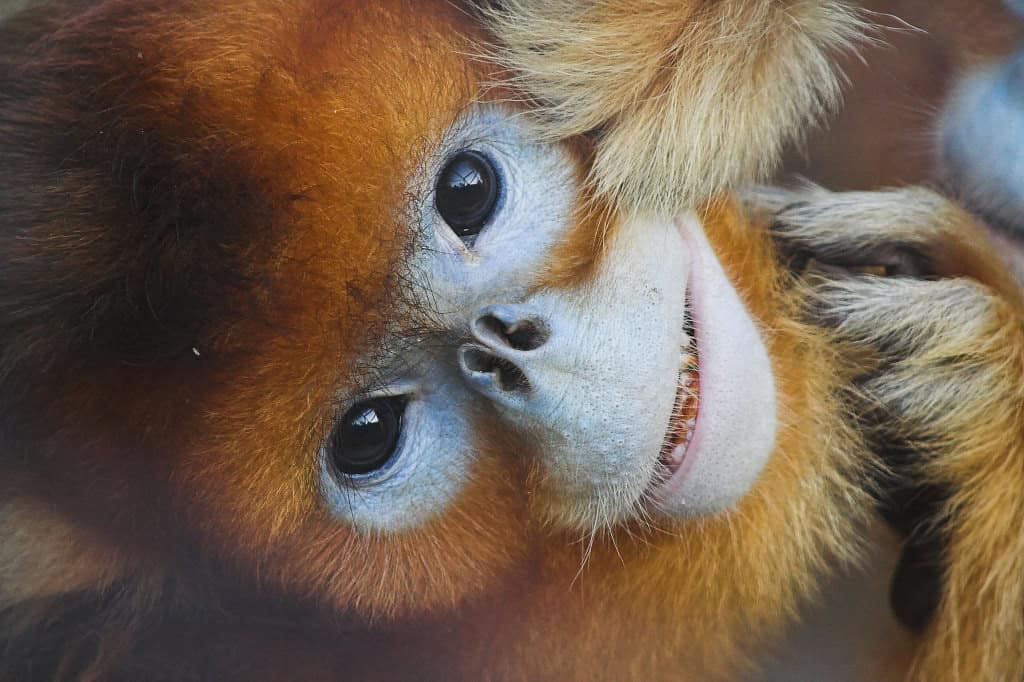
The proboscis monkey’s extraordinary nose becomes even more remarkable when compared to other primates. Most primates, including our closest relatives like chimpanzees and gorillas, have relatively flat noses with nostrils that face forward or downward. Even among other colobine monkeys (the subfamily to which proboscis monkeys belong), no species has developed such an extreme nasal morphology. This uniqueness suggests that the selective pressures driving nasal evolution in proboscis monkeys are specific to their ecological and social environment.
Interestingly, there are a few other primate species that show unusual nasal development, though none as extreme as the proboscis monkey. The snub-nosed monkeys (genus Rhinopithecus) of China and Vietnam have upturned noses thought to be adaptations to cold mountain environments, while the pig-tailed langur (Simias concolor) of the Mentawai Islands has a somewhat protruding nose. These examples of convergent evolution toward distinctive nasal structures in different primate lineages suggest that noses can respond dramatically to selective pressures, making the proboscis monkey’s extreme case less evolutionary anomalous than it might initially appear.
Developmental Biology of the Nose
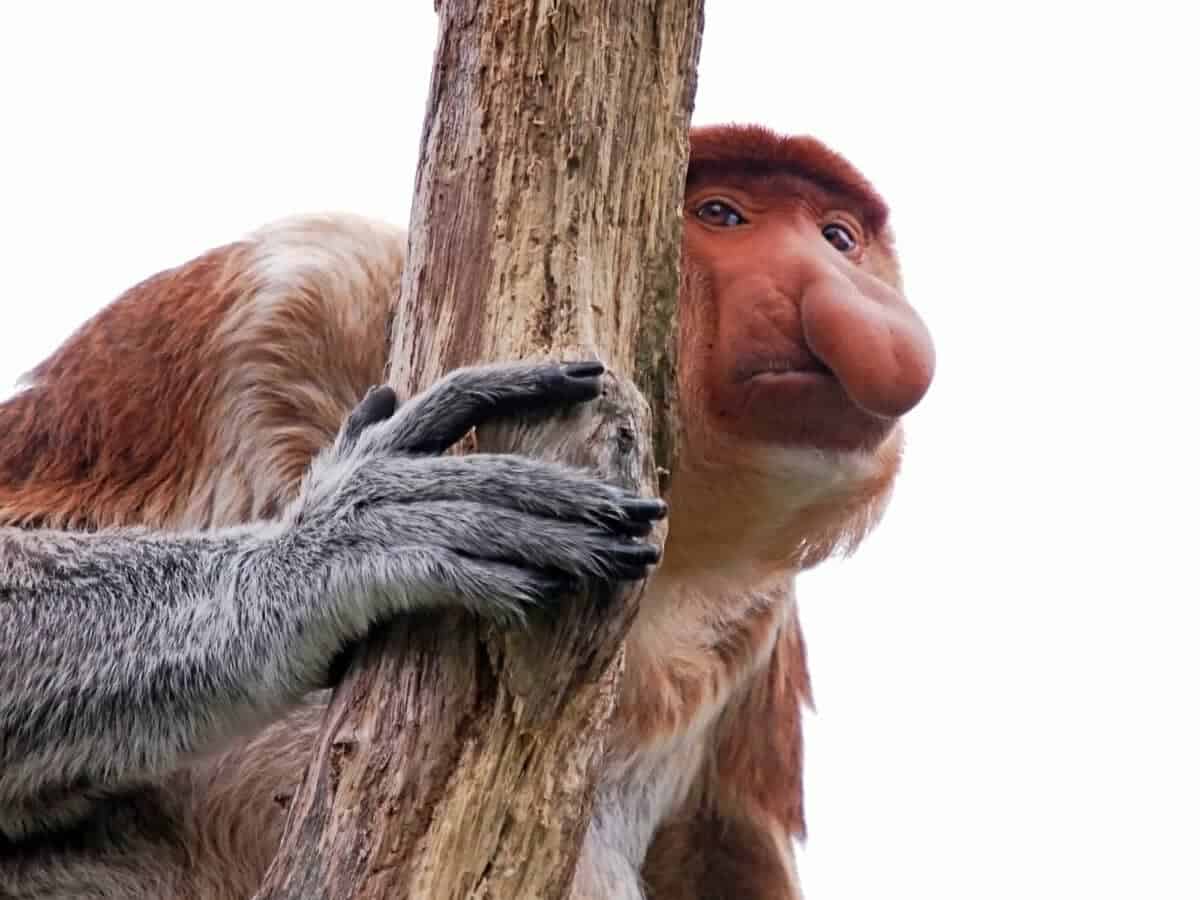
The development of the proboscis monkey’s distinctive nose throughout its life cycle offers fascinating insights into the biological mechanisms underlying this trait. At birth, infant proboscis monkeys of both sexes have small, upturned noses similar to those of adult females. As males approach sexual maturity around 7 years of age, their noses begin to elongate and take on the characteristic pendulous shape, coinciding with increases in testosterone levels and overall body growth. This pattern of development suggests that the nose is a secondary sexual characteristic, similar to a lion’s mane or a peacock’s tail.
The genetic and hormonal mechanisms controlling this dramatic nasal development remain incompletely understood. However, researchers believe that testosterone plays a crucial role, possibly activating genes that control the growth of nasal tissues. Studying the embryonic development of the proboscis monkey’s nose could provide valuable insights into the genetic architecture underlying extreme morphological traits in mammals. Such research might also illuminate how relatively small genetic changes can produce dramatic phenotypic differences, a key question in evolutionary developmental biology.
Ecological Adaptations and Habitat Specialization

The proboscis monkey’s unique nose may also reflect adaptations to its specialized ecological niche. These primates are closely associated with riverine and coastal mangrove forests in Borneo, spending much of their time near water. They are excellent swimmers, regularly crossing rivers and even diving underwater to escape predators. In this context, the downward-facing nostrils of their prominent noses may help prevent water from entering the nasal passages during swimming, similar to adaptations seen in semi-aquatic mammals like hippopotamuses.
Additionally, proboscis monkeys have a specialized diet consisting largely of unripe fruits, seeds, and young leaves high in toxic compounds. Some researchers have speculated that their enhanced nasal anatomy might include adaptations for detecting or processing the volatile compounds in these foods. While this hypothesis remains speculative, it highlights how multiple selective pressures could interact to shape the evolution of a single trait. The proboscis monkey’s nose may represent an evolutionary compromise that addresses several adaptive challenges simultaneously within their unique ecological setting.
Genetic Underpinnings and Evolutionary Rates
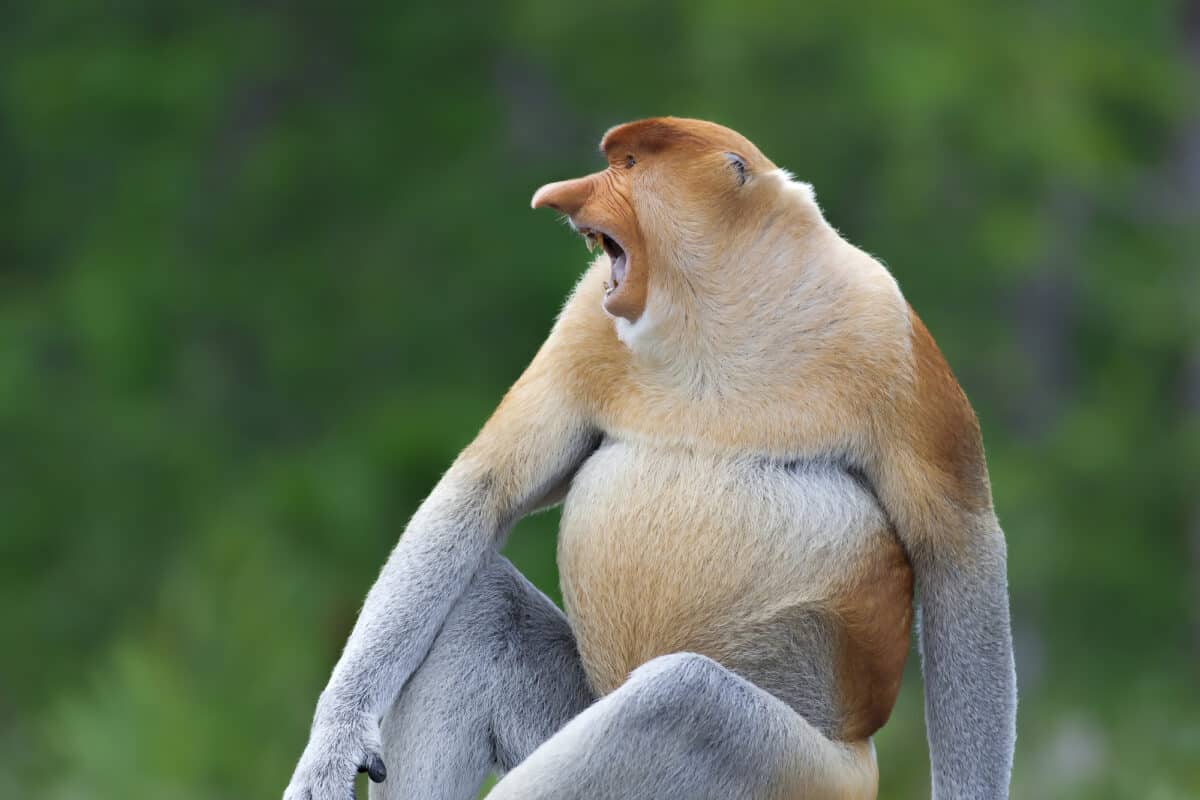
The genetic basis for the proboscis monkey’s extreme nasal development has begun to attract attention from evolutionary geneticists. Comparative genomic studies between proboscis monkeys and closely related colobine species have identified candidate genes that may contribute to their unique nasal morphology. These include genes involved in cartilage and soft tissue development, as well as those responsive to sex hormones. The relatively rapid evolution of these distinctive noses raises interesting questions about the rates of morphological evolution in primates.
Some genetic studies suggest that the extreme nasal phenotype may have evolved relatively recently in evolutionary time, perhaps within the last few hundred thousand years. This rapid change could indicate strong selective pressure, possibly due to changes in social structure or ecological conditions in Borneo during this period. The proboscis monkey’s nose thus offers a compelling case study in how quickly novel traits can evolve under the right selective conditions, challenging traditional views about the generally conservative nature of primate morphological evolution.
Conservation Implications
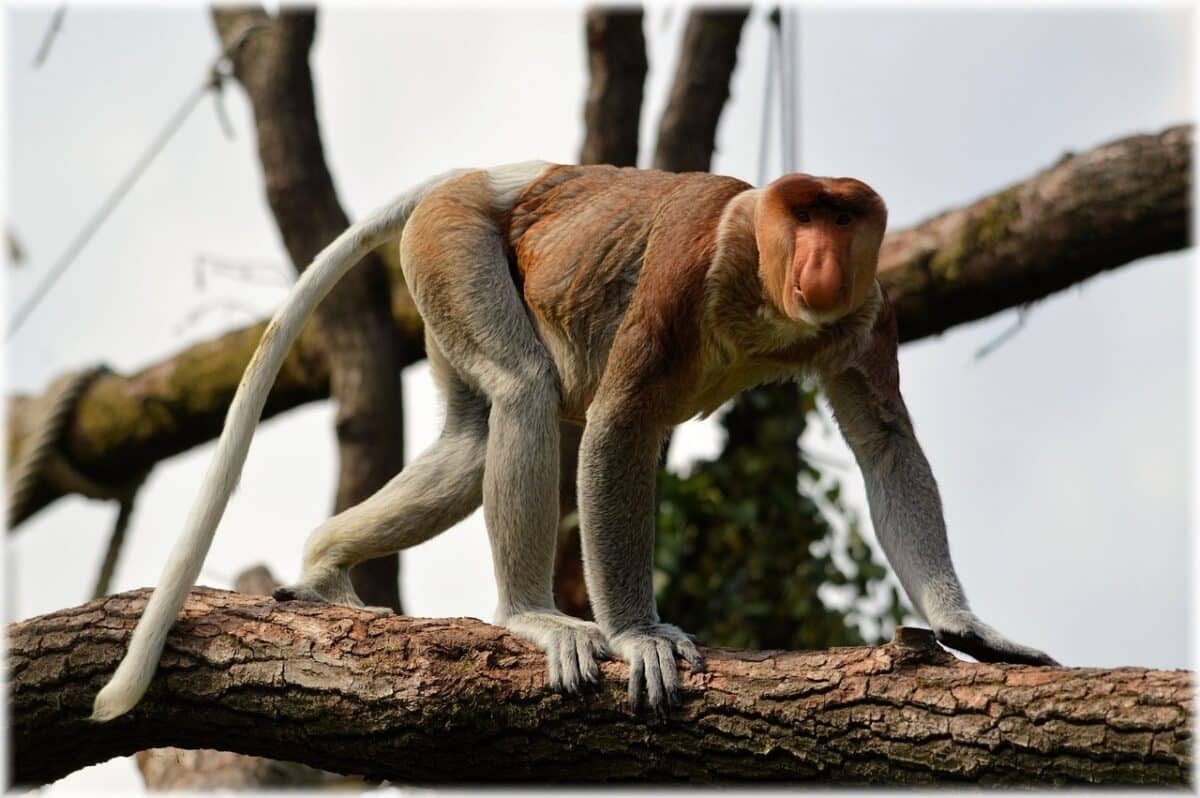
Understanding the evolution of the proboscis monkey’s nose has important implications for conservation efforts. As an endangered species with populations declining by more than 50% over the past 40 years, proboscis monkeys face severe threats from habitat loss as Borneo’s forests are cleared for palm oil plantations, timber, and human settlements. Their specialized adaptations, including potentially their distinctive noses, may make them particularly vulnerable to environmental changes. Their dependence on riverine habitats, possibly linked to some functions of their unique nasal anatomy, means they are especially affected by changes in river ecosystems.
Conservation strategies must consider not just the preservation of forest cover but the maintenance of the specific ecological conditions that have shaped the proboscis monkey’s evolution. For example, protecting the integrity of riverine corridors is crucial for maintaining the connectivity between populations. Additionally, the monkey’s iconic nose has made it a flagship species for conservation in Borneo, helping to raise awareness about the broader threats facing the island’s biodiversity. By understanding the evolutionary significance of their unique features, conservation efforts can better address the specific needs of this remarkable primate.
Cultural Significance and Human Perceptions
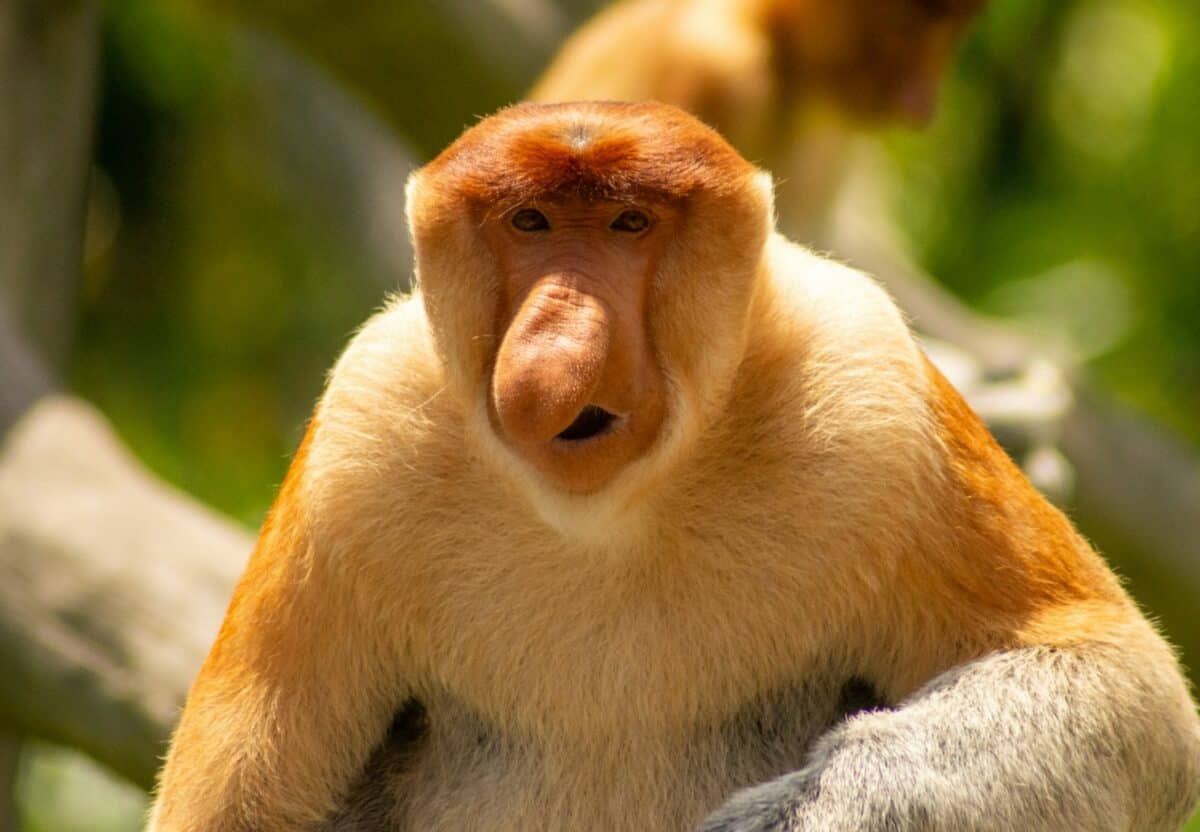
The proboscis monkey’s distinctive appearance has earned it a special place in human culture, particularly among the indigenous peoples of Borneo. In traditional Dayak folklore, these monkeys are sometimes associated with forest spirits or seen as transformed ancestors. Their local nickname “monyet belanda” (Dutch monkey) reflects the historical context of Dutch colonization and demonstrates how human observers often interpret animal traits through their own cultural lens. For many Bornean communities, the proboscis monkey represents a living symbol of their unique natural heritage.
In contemporary global culture, the proboscis monkey has become something of an internet sensation, frequently featured in lists of “strange-looking animals” or “evolutionary oddities.” While this attention can help raise awareness about their conservation needs, it sometimes reduces these complex animals to their unusual appearance. Conservation educators face the challenge of using the monkey’s distinctive nose to attract interest while also conveying the deeper scientific significance of this trait and the sophisticated adaptations it represents. Understanding the evolutionary context of the proboscis monkey’s nose can help transform public perception from mere curiosity to informed appreciation.
Future Research Directions
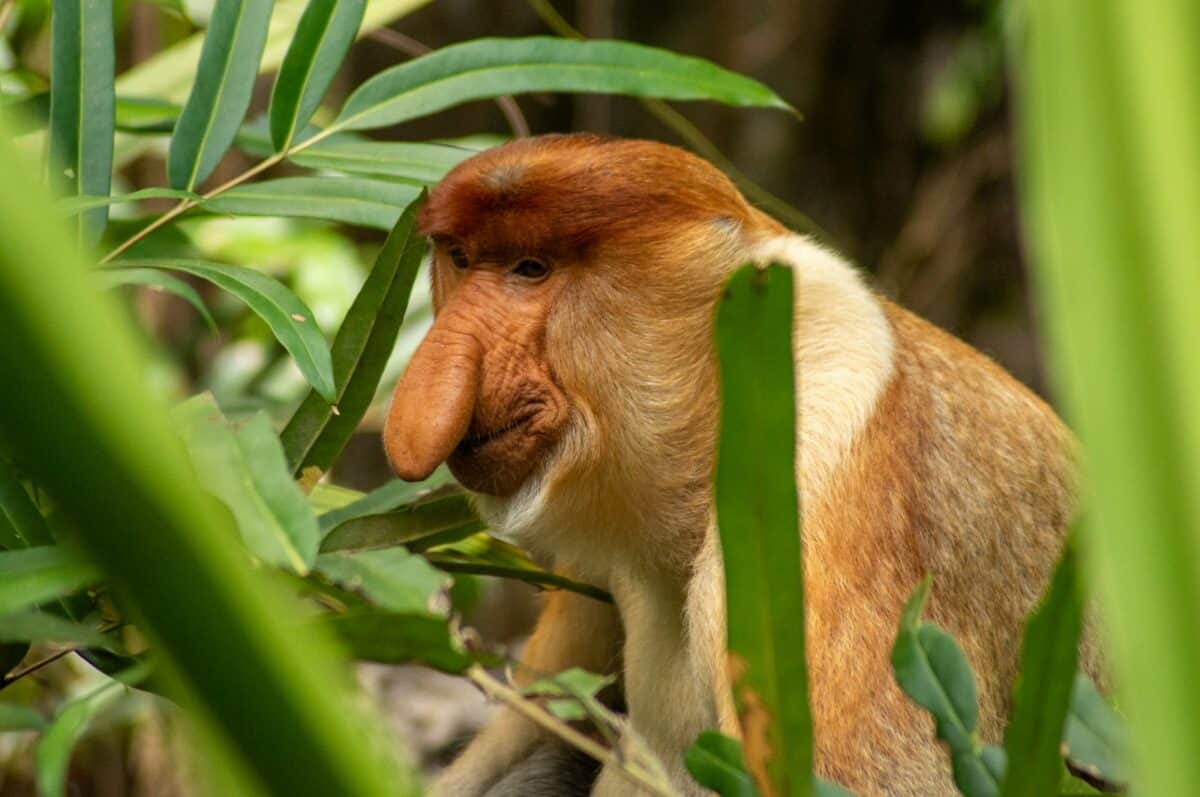
Despite decades of study, many questions about the proboscis monkey’s nose remain unanswered, opening exciting avenues for future research. Advanced imaging techniques could provide more detailed information about the internal structure of the nose and how it changes during vocalizations or different physiological states. Genetic studies comparing the developmental pathways of nasal growth between proboscis monkeys and other primates could illuminate the molecular mechanisms behind this extreme trait. Long-term behavioral studies correlating nose size with specific fitness outcomes would help quantify the precise selective advantages it confers.
Another promising direction involves using computer modeling to simulate the acoustic properties of differently shaped noses, potentially revealing the optimal design for sound amplification in forest environments. Climate change researchers are also interested in how the thermoregulatory functions of the nose might affect the species’ ability to adapt to warming temperatures in Borneo. As new technologies and methodological approaches become available, our understanding of this remarkable evolutionary adaptation will continue to deepen, potentially revealing new functions and significance that we have yet to appreciate.
Conclusion: Nature’s Evolutionary Marvel
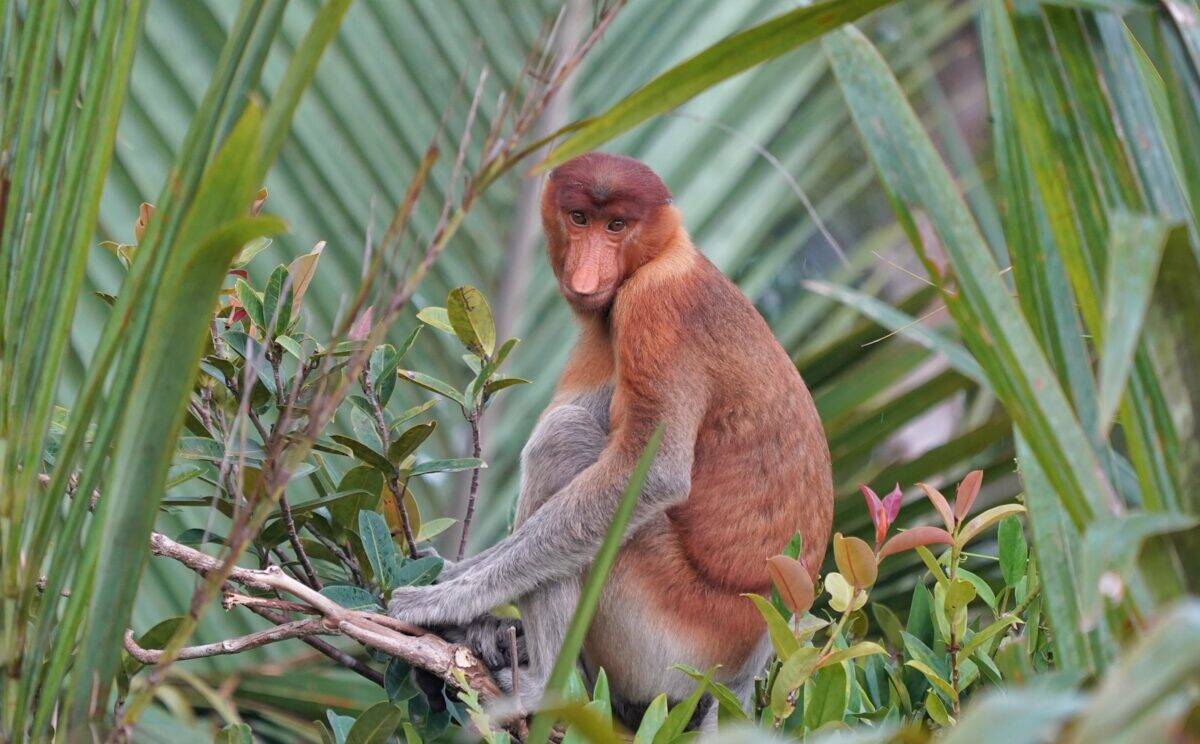
The proboscis monkey’s extraordinary nose represents one of nature’s most striking examples of evolutionary specialization. Far from being merely an odd curiosity, this remarkable feature embodies the complex interplay of sexual selection, acoustic adaptation, and possibly thermoregulation that drives the development of extreme traits in the animal kingdom. Through its multiple functions, the proboscis monkey’s nose demonstrates how evolution can produce structures that serve several adaptive purposes simultaneously, maximizing fitness benefits while managing the costs of maintaining such an elaborate appendage.
As we continue to study these remarkable primates, their distinctive noses remind us of the creative power of evolutionary processes to shape life in unexpected ways. The fact that such an extreme trait could evolve in a relatively short evolutionary timeframe challenges us to reconsider the potential for rapid morphological change in mammals, including primates. Most importantly, the precarious conservation status of the proboscis monkey underscores our responsibility to protect not just this unique species, but the entire ecological context that has shaped its evolution and continues to sustain it in the forests of Borneo.
- This Massive Crocodile Fossil Dwarfs Anything Alive Today - August 15, 2025
- From Symbol to Supper: The Cultural Journey of the Chicken - August 15, 2025
- The Lizard That Brought Fire: Aboriginal Australian Legends - August 15, 2025

